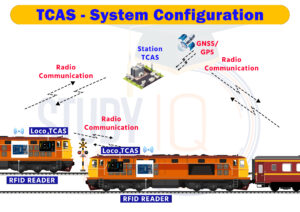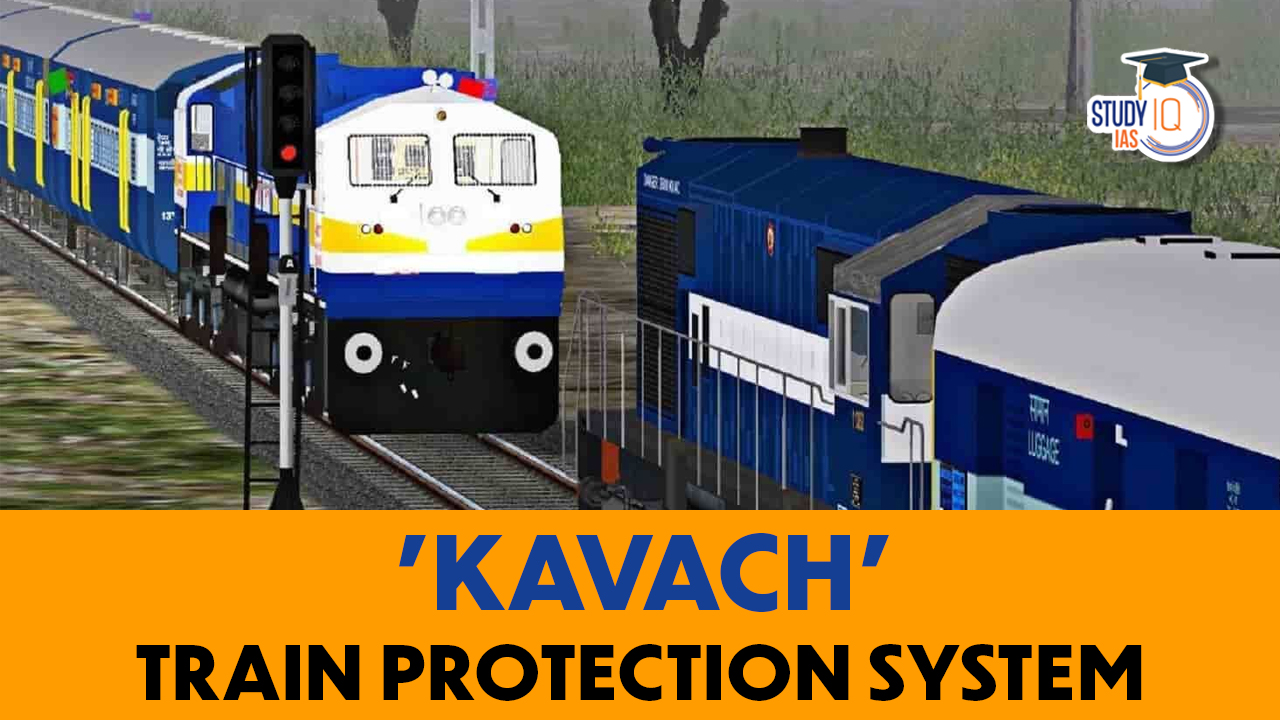Table of Contents
Kavach Train Protection System
The Kavach Train Protection System, which has obtained Safety Integrity Level 4 (SIL-4) certification, offers a cost-effective solution with an exceptional level of safety and an incredibly low error probability (1 error in 10,000 years). As part of the Atmanirbhar Bharat initiative, the Kavach System was introduced in the 2022 Union Budget with the aim of enhancing safety and capacity.
In partnership with three Indian vendors, the Research Design and Standards Organisation (RDSO) has successfully developed Kavach, which has been selected as the official National ATP System for Indian Railways.
Key Features of Kavach System
Features of the Kavach System include:
- Assists the Loco Pilot in avoiding Signal Passing At Danger (SPAD) and overspeeding. It consists of electronic devices and RFID technology installed in locomotives, signalling systems, and tracks. The devices communicate using ultra-high radio frequencies and control train brakes while alerting drivers based on programmed logic.
- Enables train operation in challenging weather conditions like dense fog.
- Automatically controls the train’s speed and applies brakes when necessary for enhanced safety and efficiency.
- Transmits line-side signals to the train cab, particularly beneficial in high-speed and foggy conditions.
- Continuously updates the train’s movement authority.
- Automatically sounds the whistle at level crossing gates.
- Facilitates direct communication between locomotives to prevent collisions.
- Incorporates an SOS feature to bring the train under control in case of accidents.
Read about: Important Schemes of Indian Government
Kavach System Implementation
The plan is to implement this indigenous system across approximately 2,000 km of rail network during 2022-23. The Union Railway Minister, Ashwini Vaishnaw, recently inspected the Kavach working system trial on the Lingampalli-Vikarabad section in the Secunderabad Division of South Central Railway. The South Central Railway Zone is a leading implementer of the Kavach – Train Collision Avoidance System (TACS).

As of March 2023 year, Kavach has implemented over 1,465 km in the SCR limits, covering 77 locomotives and 135 stations. The Indian Railways Institute of Signal Engineering & Telecommunications (IRISET) in Secunderabad serves as the ‘Centre of Excellence’ for Kavach. IRISET has been assigned by the Railway Board to train the railway staff on Kavach, with the institute’s Kavach lab conducting training programs throughout the year.
Read about: New Parliament Building
Kavach System Future Deployment Strategy
The Railway Board is implementing the Kavach system in a focused manner, prioritizing different sections based on their risk of accidents. The first priority is given to High-Density Routes, specifically the New Delhi-Mumbai and New Delhi-Howrah sections, where trains operate close to each other, increasing the chances of accidents. The second priority is Highly Used Networks, followed by other Passenger High-Density Routes. Finally, the aim is to cover all other routes.
To ensure the deployment of Kavach, the Research Designs and Standards Organization (RDSO) has approved three firms—Medha Servo Drives, HBL, and Kernex—for providing Kavach equipment. Two more firms are in the pipeline for approval. This indicates a growing number of options for implementing Kavach across the railway network.
Furthermore, the implementation process has addressed various challenges and glitches. Vulnerabilities such as vehicles crossing closed level crossings, stray cattle or boulders on the tracks, and radio communication issues in tunnels and ghat sections have been tackled effectively.
The future deployment strategy of Kavach involves continuing the prioritization approach, expanding the number of approved firms, and addressing any remaining challenges to ensure comprehensive coverage and enhanced safety across all railway routes.
Read about: Sengol


 Question Hour in Parliament: Meaning, Ty...
Question Hour in Parliament: Meaning, Ty...
 Daily Quiz 18 July 2025
Daily Quiz 18 July 2025





















